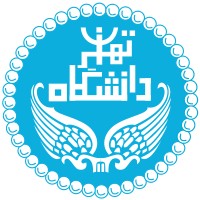Company Details
long-covid-initiative
None employees
213
92312
aboutlongcovid.org
0
BRO_1749712
In-progress

Brown University Long COVID Initiative Company CyberSecurity Posture
aboutlongcovid.orgThe CDC estimates that over 146 million Americans have been infected with and recovered from COVID-19. Studies show that up to one in three people who contract COVID-19 continue to suffer symptoms three to six months after getting infected. Around the world, Long COVID is causing significant disability and suffering, disproportionately affecting minority and low-income populations. With generous funding from The Hassenfeld Foundation, the Long COVID Initiative at the Brown University School of Public Health was publicly launched in September 2021. The Initiative team rapidly studies and communicates the impact of Long COVID on people and their communities. We bring together researchers, clinicians, employers and patients with the goal of informing data-driven decision-making within the public health community. In addition to its affiliation with the Brown University School of Public Health, the Initiative is a project of The People, Place & Health Collective, a research group focused on confronting epidemiological challenges.
Company Details
long-covid-initiative
None employees
213
92312
aboutlongcovid.org
0
BRO_1749712
In-progress
Between 750 and 799

 BULCI Global Score (TPRM)
BULCI Global Score (TPRM)XXXX

Description: Brown University, a private US research university, suffered a cyber attack on its system after which it had to disable systems and cut connections to the data centre. The attack focused on the university’s Windows-based devices and thus faculty and staff had to switch to computers running other operating systems, smartphones, or tablets.


No incidents recorded for Brown University Long COVID Initiative in 2025.
No incidents recorded for Brown University Long COVID Initiative in 2025.
No incidents recorded for Brown University Long COVID Initiative in 2025.
BULCI cyber incidents detection timeline including parent company and subsidiaries

The CDC estimates that over 146 million Americans have been infected with and recovered from COVID-19. Studies show that up to one in three people who contract COVID-19 continue to suffer symptoms three to six months after getting infected. Around the world, Long COVID is causing significant disability and suffering, disproportionately affecting minority and low-income populations. With generous funding from The Hassenfeld Foundation, the Long COVID Initiative at the Brown University School of Public Health was publicly launched in September 2021. The Initiative team rapidly studies and communicates the impact of Long COVID on people and their communities. We bring together researchers, clinicians, employers and patients with the goal of informing data-driven decision-making within the public health community. In addition to its affiliation with the Brown University School of Public Health, the Initiative is a project of The People, Place & Health Collective, a research group focused on confronting epidemiological challenges.


Texas A&M University has a proud history that stretches back to 1876 when The Agricultural and Mechanical College of Texas became the first public institution of higher learning in the state of Texas. Nestled in the heart of the Houston-Dallas-Austin triangle, Texas A&M University at College Station

University of Tehran, an iconic institution of higher education in Iran, traces its origins back seven centuries to its foundation as a houza (traditional religious school). Over time, it evolved from this religious structure into a modern academic institution. About a century ago, the Dar-ol-Fonoon

We believe a world yearning for hope and joy needs the graduates of Brigham Young University—disciples of Jesus Christ who are driven by love for God and His children and who are prepared to serve and lead. This preparation demands a unique university model: at BYU, belief enhances inquiry, study am

The Georgia Institute of Technology is one of the nation's premier research universities providing a focused, technologically based education to more than 25,000 undergraduate and graduate students . Ranked seventh among U.S. News & World Report's top public universities, Georgia Tech offers degrees

The University of Arizona is the leading public research university in the American Southwest and Arizona's only member of the prestigious Association of American Universities. As the state's land-grant university, our research and resources enrich communities around the state and worldwide. Named #

Founded in 1898, Northeastern is a global research university with a distinctive, experience-driven approach to education and discovery. The university is a leader in experiential learning, powered by the world’s most far-reaching cooperative education program. We integrate classroom study with opp
.png)
Third Win After 2022 and 2023 Recognition. SINGAPORE, Nov. 28, 2025 /PRNewswire/ — Ensign InfoSecurity, Asia Pacific's largest pure-play,...
Rhode Island Emergency Management Agency said its CodeRED notification system is down after a national cybersecurity incident.
ServiceNow Inc. is reportedly in advanced talks to acquire Veza Inc., a startup with an identity management platform of the same name.
A 15-year-old known online as “Rey” has been allegedly identified as a key figure in Scattered LAPSUS$ Hunters (SLSH), a hacking group said...
Thinking about whether Palo Alto Networks is a buy right now? If you have even a hint of curiosity about the stock's value,...
By Juliet ETEFE ([email protected]) Virtual Infosec Africa (VIA), in partnership with global cybersecurity firm Exabeam, has launched Ghana's...
Mohit Chawla, Deputy Inspector General (DIG) of Himachal Pradesh Police, has been honoured with the Chief Information Security Officer...
This list of curated articles highlights cybersecurity incidents affecting Pierce County. They emphasize vulnerabilities and breaches that...
CINCINNATI (WXIX) -As Black Friday weekend approaches, cybersecurity experts are warning shoppers about increased online scams targeting...

Explore insights on cybersecurity incidents, risk posture, and Rankiteo's assessments.
The official website of Brown University Long COVID Initiative is https://aboutlongcovid.org/.
According to Rankiteo, Brown University Long COVID Initiative’s AI-generated cybersecurity score is 762, reflecting their Fair security posture.
According to Rankiteo, Brown University Long COVID Initiative currently holds 0 security badges, indicating that no recognized compliance certifications are currently verified for the organization.
According to Rankiteo, Brown University Long COVID Initiative is not certified under SOC 2 Type 1.
According to Rankiteo, Brown University Long COVID Initiative does not hold a SOC 2 Type 2 certification.
According to Rankiteo, Brown University Long COVID Initiative is not listed as GDPR compliant.
According to Rankiteo, Brown University Long COVID Initiative does not currently maintain PCI DSS compliance.
According to Rankiteo, Brown University Long COVID Initiative is not compliant with HIPAA regulations.
According to Rankiteo,Brown University Long COVID Initiative is not certified under ISO 27001, indicating the absence of a formally recognized information security management framework.
Brown University Long COVID Initiative operates primarily in the Public Health industry.
Brown University Long COVID Initiative employs approximately None employees people worldwide.
Brown University Long COVID Initiative presently has no subsidiaries across any sectors.
Brown University Long COVID Initiative’s official LinkedIn profile has approximately 213 followers.
Brown University Long COVID Initiative is classified under the NAICS code 92312, which corresponds to Administration of Public Health Programs.
No, Brown University Long COVID Initiative does not have a profile on Crunchbase.
Yes, Brown University Long COVID Initiative maintains an official LinkedIn profile, which is actively utilized for branding and talent engagement, which can be accessed here: https://www.linkedin.com/company/long-covid-initiative.
As of November 28, 2025, Rankiteo reports that Brown University Long COVID Initiative has experienced 1 cybersecurity incidents.
Brown University Long COVID Initiative has an estimated 279 peer or competitor companies worldwide.
Incident Types: The types of cybersecurity incidents that have occurred include Cyber Attack.
Detection and Response: The company detects and responds to cybersecurity incidents through an containment measures with disabled systems and cut connections to the data centre, and recovery measures with faculty and staff switched to computers running other operating systems, smartphones, or tablets..
Title: Cyber Attack on Brown University
Description: Brown University, a private US research university, suffered a cyber attack on its system after which it had to disable systems and cut connections to the data centre. The attack focused on the university’s Windows-based devices and thus faculty and staff had to switch to computers running other operating systems, smartphones, or tablets.
Type: Cyber Attack
Common Attack Types: The most common types of attacks the company has faced is Cyber Attack.

Systems Affected: Windows-based devices
Operational Impact: Disabled systems and cut connections to the data centre

Entity Name: Brown University
Entity Type: Educational Institution
Industry: Education
Location: United States

Containment Measures: Disabled systems and cut connections to the data centre
Recovery Measures: Faculty and staff switched to computers running other operating systems, smartphones, or tablets
Handling of PII Incidents: The company handles incidents involving personally identifiable information (PII) through by disabled systems and cut connections to the data centre and .
Data Recovery from Ransomware: The company recovers data encrypted by ransomware through Faculty and staff switched to computers running other operating systems, smartphones, or tablets, .
Most Significant System Affected: The most significant system affected in an incident was Windows-based devices.
Containment Measures in Most Recent Incident: The containment measures taken in the most recent incident was Disabled systems and cut connections to the data centre.
.png)
Angular is a development platform for building mobile and desktop web applications using TypeScript/JavaScript and other languages. Prior to versions 19.2.16, 20.3.14, and 21.0.1, there is a XSRF token leakage via protocol-relative URLs in angular HTTP clients. The vulnerability is a Credential Leak by App Logic that leads to the unauthorized disclosure of the Cross-Site Request Forgery (XSRF) token to an attacker-controlled domain. Angular's HttpClient has a built-in XSRF protection mechanism that works by checking if a request URL starts with a protocol (http:// or https://) to determine if it is cross-origin. If the URL starts with protocol-relative URL (//), it is incorrectly treated as a same-origin request, and the XSRF token is automatically added to the X-XSRF-TOKEN header. This issue has been patched in versions 19.2.16, 20.3.14, and 21.0.1. A workaround for this issue involves avoiding using protocol-relative URLs (URLs starting with //) in HttpClient requests. All backend communication URLs should be hardcoded as relative paths (starting with a single /) or fully qualified, trusted absolute URLs.
Forge (also called `node-forge`) is a native implementation of Transport Layer Security in JavaScript. An Uncontrolled Recursion vulnerability in node-forge versions 1.3.1 and below enables remote, unauthenticated attackers to craft deep ASN.1 structures that trigger unbounded recursive parsing. This leads to a Denial-of-Service (DoS) via stack exhaustion when parsing untrusted DER inputs. This issue has been patched in version 1.3.2.
Forge (also called `node-forge`) is a native implementation of Transport Layer Security in JavaScript. An Integer Overflow vulnerability in node-forge versions 1.3.1 and below enables remote, unauthenticated attackers to craft ASN.1 structures containing OIDs with oversized arcs. These arcs may be decoded as smaller, trusted OIDs due to 32-bit bitwise truncation, enabling the bypass of downstream OID-based security decisions. This issue has been patched in version 1.3.2.
Suricata is a network IDS, IPS and NSM engine developed by the OISF (Open Information Security Foundation) and the Suricata community. Prior to versions 7.0.13 and 8.0.2, working with large buffers in Lua scripts can lead to a stack overflow. Users of Lua rules and output scripts may be affected when working with large buffers. This includes a rule passing a large buffer to a Lua script. This issue has been patched in versions 7.0.13 and 8.0.2. A workaround for this issue involves disabling Lua rules and output scripts, or making sure limits, such as stream.depth.reassembly and HTTP response body limits (response-body-limit), are set to less than half the stack size.
Suricata is a network IDS, IPS and NSM engine developed by the OISF (Open Information Security Foundation) and the Suricata community. In versions from 8.0.0 to before 8.0.2, a NULL dereference can occur when the entropy keyword is used in conjunction with base64_data. This issue has been patched in version 8.0.2. A workaround involves disabling rules that use entropy in conjunction with base64_data.

Get company history
















Every week, Rankiteo analyzes billions of signals to give organizations a sharper, faster view of emerging risks. With deeper, more actionable intelligence at their fingertips, security teams can outpace threat actors, respond instantly to Zero-Day attacks, and dramatically shrink their risk exposure window.
Identify exposed access points, detect misconfigured SSL certificates, and uncover vulnerabilities across the network infrastructure.
Gain visibility into the software components used within an organization to detect vulnerabilities, manage risk, and ensure supply chain security.
Monitor and manage all IT assets and their configurations to ensure accurate, real-time visibility across the company's technology environment.
Leverage real-time insights on active threats, malware campaigns, and emerging vulnerabilities to proactively defend against evolving cyberattacks.




